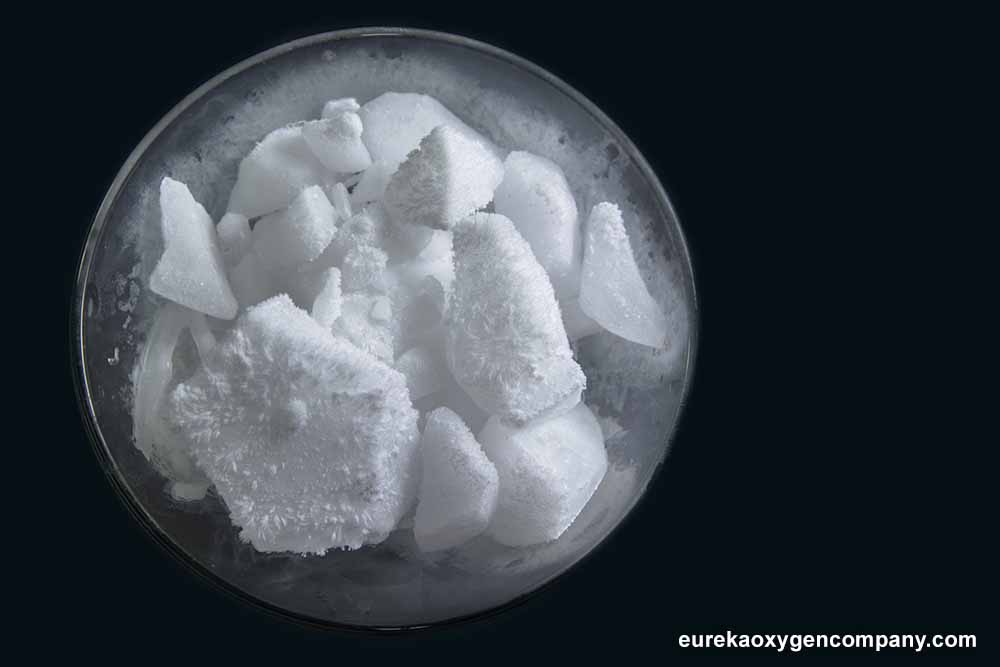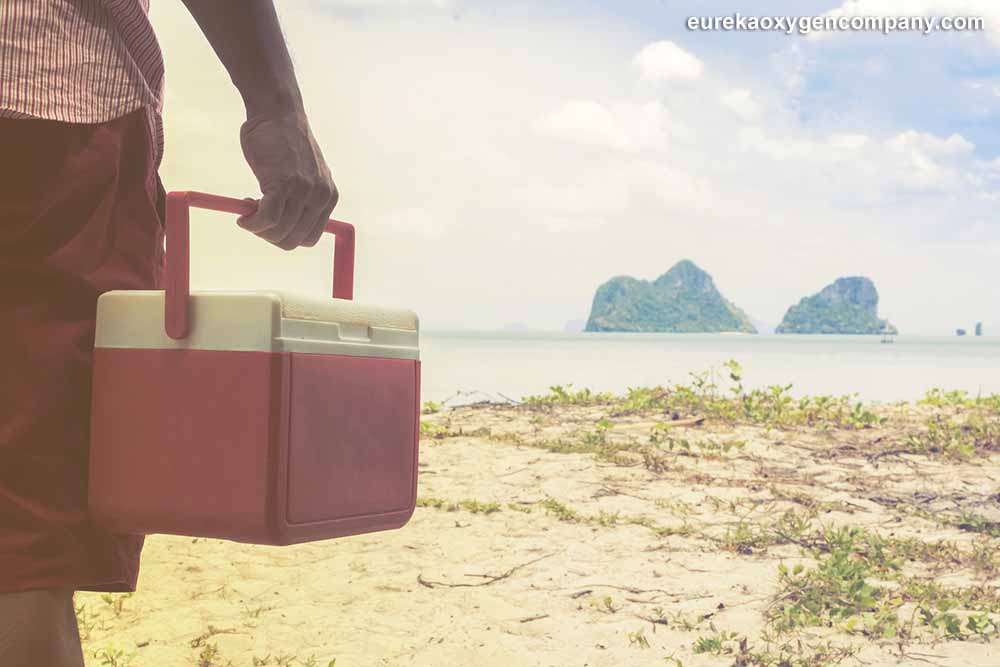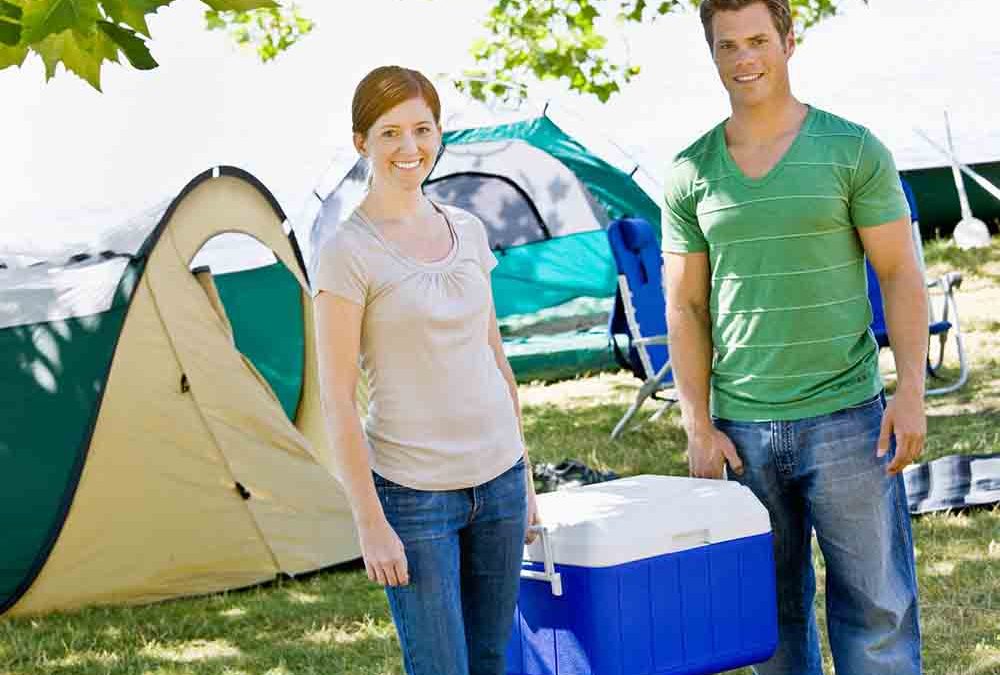Most people are familiar with the use of dry ice in special effects and Halloween parties. Some even use it for cleaning with dry ice blasting, or for cannabis extraction. But did you know that you can take dry ice camping as an alternative cooling source that doesn’t leave a puddle of water?

When utilizing dry ice for camping, you should plan to store it in a cooler to limit its exposure to the environment. 5 lbs. of dry ice will sublimate in 24 hours without protection, much like a bag of water-based ice will melt quickly outside a cooler. Be sure to fill up any additional space in the cooler with newspapers, styrofoam or towels to reduce as much air in the cooler as possible.

Plan to get your dry ice on your way out to the campground to reduce the amount of time it is being exposed to air. With our 4 locations in Northern California, you can stop by a Eureka Oxygen Company branch when heading out to the beach or up to the mountains. Plan for 10-20 lbs. of dry ice for each 24-hour period.
Since cold sinks, place the dry ice on top of your food in the cooler. Protect the dry ice from touching any water by putting a layer of newspaper between it and the food. You can put water-based ice below your food, but keep the dry ice dry. Your food will be quite frozen, so leave time to thaw before you need anything.
Some safety precautions to be aware of:
- Always handle dry ice with long sleeves and gloves. Treat it more like it is red-hot rather than cold.
- Always have fresh air circulating in your vehicle when driving with dry ice. It will be giving off carbon dioxide which can cause negative health effects such as rapid breathing.
- Don’t store dry ice in a completely airtight container. The off-gassing of carbon dioxide will build up and the container may explode.
If you’re wondering about how dry ice actually works for camping, here is one story of a successful experience:
“I have a 100-quart Coleman that I pack before leaving with a 50-pound block of dry ice and two 25-pound blocks of regular ice on either side of the dry ice. The dry ice is wrapped in many layers of newspaper, which is a marvelous insulator. If the cooler is kept in the shade and covered with a heavy blanket, the dry ice will last from 8-10 days at which time the wet ice first begins to melt. This will then last another 4-5 days. I would be willing to bet that using another method I heard (burying the ice chest in sand) in conjunction with mine would keep the wet ice available for 2-3 weeks. However, there is a downside. (1) Only frozen foods can be kept in the cooler until the dry ice is gone (no beer). (2) Lots of weight — the whole shebang weighs 100 lbs. sans food. Dry Ice is very dense – a 50 lb. block is the same size as a 25 lb. block of wet ice.”
If you’re needing to keep your cold foods cold for longer than traditional wet ice can handle, consider using dry ice for your next camping trip. Eureka Oxygen has you covered and can give you lots of other tips for a successful dry ice experience.

